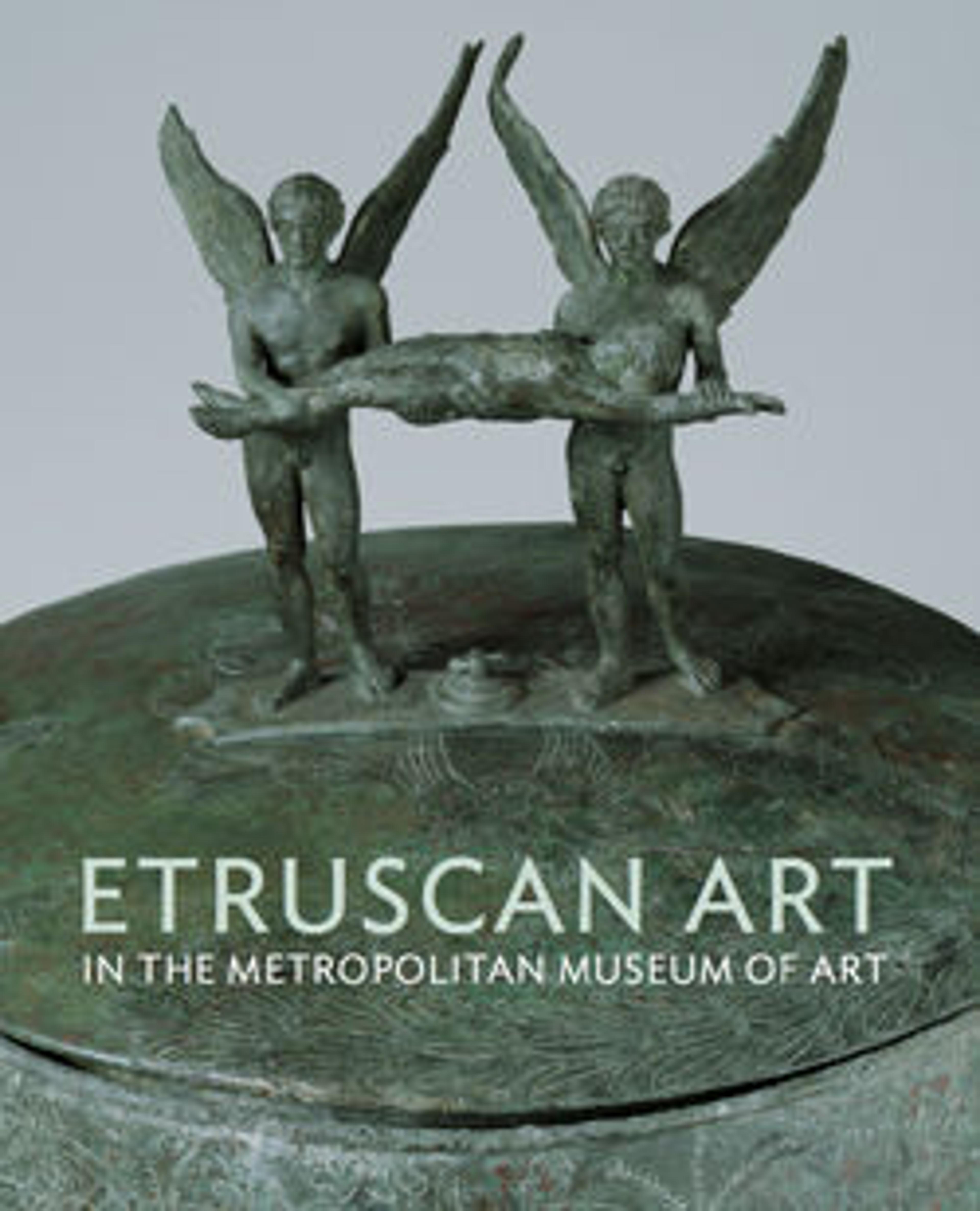Bronze thymiaterion (incense burner)
Incense burners were popular items among the Etruscans, who often buried their dead with them. This example is typical of a type normally associated with Vulci, the site of extensive bronze-working activity throughout much of Etruscan history. A robust nude youth, a descendant of the Greek kouros type, stands on a triangular platform supported by a tripod with lion's-paw feet. The shaft rising from his head terminates in a plant-like form that originally supported a small bowl for the incense.
Artwork Details
- Title:Bronze thymiaterion (incense burner)
- Period:Archaic
- Date:late 6th century BCE
- Culture:Etruscan
- Medium:Bronze
- Dimensions:total H. 13 3/4 in. (34.9 cm); H. of figure 3 3/4 in. (9.6 cm)
- Classification:Bronzes
- Credit Line:Gift of Henry G. Marquand, 1897
- Object Number:97.22.22
- Curatorial Department: Greek and Roman Art
More Artwork
Research Resources
The Met provides unparalleled resources for research and welcomes an international community of students and scholars. The Met's Open Access API is where creators and researchers can connect to the The Met collection. Open Access data and public domain images are available for unrestricted commercial and noncommercial use without permission or fee.
To request images under copyright and other restrictions, please use this Image Request form.
Feedback
We continue to research and examine historical and cultural context for objects in The Met collection. If you have comments or questions about this object record, please contact us using the form below. The Museum looks forward to receiving your comments.
